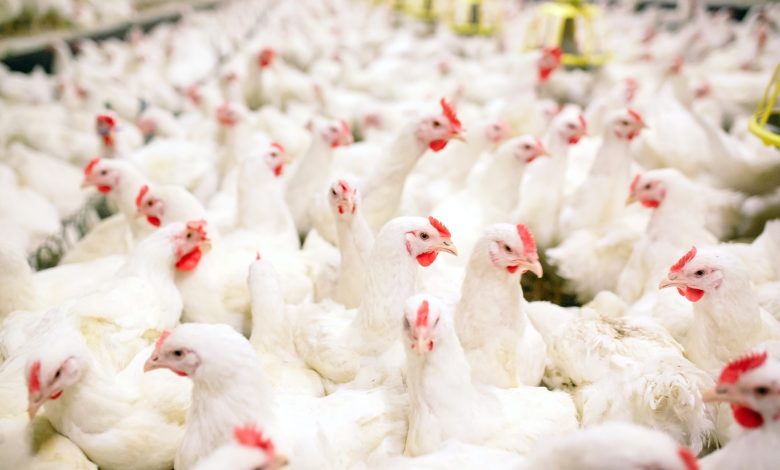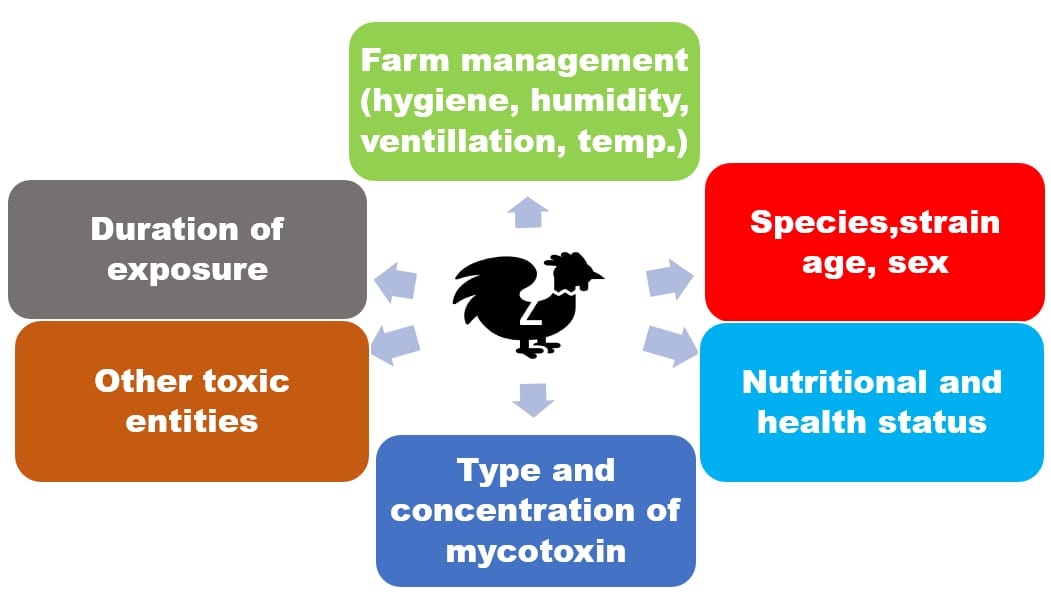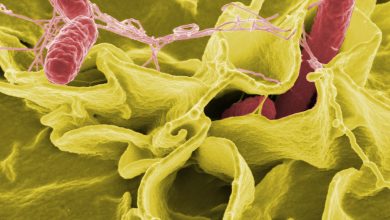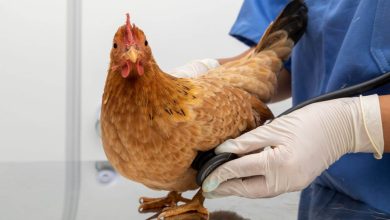PESTICIDES AND INSECTICIDES USED IN POULTRY INDUSTRIES

PESTICIDES AND INSECTICIDES USED IN POULTRY INDUSTRIES
Dr. Yash Bhargava, MVSc (Teaching Associate IPVS, DUVASU)
Dr. Pradeep Kumar MVSc, PHd (Assistant Professor Department of veterinary Parasitology, COVSc & AH, DUVASU, Mathura)
Dr. Shardendu Narayan Giri MVSc (Teaching Associate IPVS, DUVASU)
Dr. Sudaksha Saraswat BVSc & AH (Teaching Associate IPVS, DUVASU)
Dr. Abhishek Mishra, MVSc scholar (Department of LPT, DUVASU, Mathura)
Introduction
In poultry houses various types of pest and insect are found that are responsible to produce disease in birds and hence reduced bird’s performance like production of egg and meat. Most common insect and pest found in poultry houses are chicken lice, bed bug, fleas, chicken mites and mosquitoes etc. To minimize the loss produced by these insect and pest the poultry farmer should be well aware of various managemental practices like provision of clean and fresh drinking water, good and balanced feed, and quick removal of waste material and dead birds from the farm. Apart from these practices the poultry farmer should be aware of various different pest control chemical formulations and their application in proper way.
Control methods of pest by different chemical formulations and methods
| Pest | Material and formulation | Application and remarks | ||||
| Mist spray | ||||||
| Chicken mites | Carbaryl (Sevin) 50%
WP |
Repeat treatment in 4 weeks if needed. Ventilate while spraying | ||||
| Lice | 80% S | Do not spray nests, eggs, feed or water. | ||||
|
Northern fowl mites (bird treatment) |
4F(43% suspension) | Do not treat within 10 days of vaccination or other stress influence. | ||||
| Trachlorvinphos and Dichlorvos (Ravap)2.7% EC | For cage birds, spray no less than 100 to 125 psi to the vent area from below (high pressure). For floor birds, spray lightly. Do not treat more often than every 14 days. | |||||
| Tetrachlorvinphos (Rabon) 50% WP | For cage birds, spray no less than 100 to 125 psi to the vent area from below (high pressure). For floor birds, spray lightly. Do not treat more often than every 14 days. | |||||
| Coarse sprays | ||||||
| carbaryl (Sevin) 50% WP | Repeat treatment in 4 weeks if needed. Ventilate while spraying. | |||||
|
Carbaryl (Sevin)80% |
Do not spray nests, eggs feed or water. Do not treat within 10 days of vaccination or other stress influence. Use rotary or other duster. Do not treat birds more often than once every 4 weeks. Do not treat nests, eggs, feedor water. | |||||
| Dust boxes | ||||||
| Carbaryl (Sevin) 5% dust | Mix dust evenly throughout top layer of box contents.
|
|||||
| Tetrachlorvinphos | Mix dust evenly throughout top layer of box contents. | |||||
| Mist spray | ||||||
| Northern
mites (bird water treatment) than once every 2 weekse |
Permethrin
(Insectrin X, Permectrin II) 10%
|
Fowl Aim spray at the vent area. Cover or remove feed and. Can spray cages or nests. Do not treat more often | ||||
| Coarse spray | ||||||
| Northern fowl mites | Permethrin (Atroban, Expar) 11% EC | Pay particular attention to vent. One application should eliminate an infestation.
|
||||
| Dust | ||||||
| Lice | Permethrin (Insectrin GP, Permectrin) 0.25% Dust | Apply with shaker or hand duster. Treat vent area thoroughly. | ||||
| Sprays | ||||||
| Chicken
Lice |
Permethrin (Permectrin)
25% WP |
Mites Spray ceilings, walls, empty cages or nests to runoff. Repeat in 7 to 10 weeks or as needed. | ||||
|
Northern fowl mites (house and litter (Ravap) treatment) |
Tetrachlorvinphos and dichlorvos 28.7% EC | Apply thoroughly to litter, walls, roosts, cracks and crevices. | ||||
| Tetrachlorvinphos
(Rabon) 50% WP |
Apply thoroughly to litter, walls, roosts, cracks, crevices and interiors. | |||||
| Carbaryl (Sevin)
50% WP |
Do not treat poultry or game birds. Apply spray to wall, litter or roost surface. | |||||
| 80% S
4F (43%suspension) |
Force spray into cracks. Repeat as needed. Avoid contaminating nests, eggs, and feeding and watering troughs. Ventilate while spraying | |||||
| XLR (56.6% suspension) | ||||||
| Dust | ||||||
| Lice | Carbaryl (Sevin) 5% Dust | Treat litter evenly and repeat in 28 days if needed. Do not contaminate feed and water. | ||||
| Northern fowl mites | Tetrachlorvinphos
(Rabon) 50% WP 3% D |
Treat litter thoroughly and evenly. | ||||
| Roost paints | ||||||
| Northern mites and crevices
|
Tetrachlorvinphos and dichlorvos (Ravap) 28.7% EC | fowl Spray or treat by brush (thoroughly), especially cracks | ||||
| Tetrachlorvinphos
(Rabon) 50% WP |
Treat by brush (thoroughly), especially cracks and crevices. | |||||
| Sprays | ||||||
| Northern fowl
Cockroaches Mosquitoes (house and litter treatment) |
Permethrin (Insectrin X, Permectrin II) 10% | Spray to the point of runoff. Cover birds, feed and water. mites Do not treat more often than once every 2 weeks.
|
||||
|
Chicken mites
|
Carbaryl (Sevin) 50% WP | Repeat treatment in 4 weeks as needed. Ventilate while spraying.Treat walls, bedding, litter and roost surfaces. | ||||
| Tetrachlorvinphos and (Ravap) 28.7% EC | For cage birds, spray no less than 100 to 125 psi to the vent area from below (high pressure). For floor birds, spray lightly. Do not treat more often than every 14 days. | |||||
| Tetrachlorvinphos (Rabon) 50%WP | For cage birds, spray no less than 100 to 125 psi to the vent area from below (high pressure). For floor birds, spray lightly. Do not treat more often than every 14 days. | |||||
|
Bed bugs |
Carbaryl (Sevin) 50% WP | Thoroughly spray walls bedding, litter and roost surfaces. Force spray into cracks and crevices. Ventilate while spraying. Do not apply directly to poultry, nests or eggs. | ||||
| 80% S | Repeat as needed. | |||||
| 4F (43%
suspension) |
Ventilate while spraying litter surface. Repeat as needed. | |||||
| LXR (56.6% suspension) | Ventilate while spraying litter surface. Repeat as needed.
|
|||||
| Dust | ||||||
| Darkling beetle (lesser mealworm) | carbaryl (Sevin) 5% Dust | Apply evenly to litter and repeat treatment in 28 days if needed. Do not treat feed, water, nests or eggs. | ||||
| Sprays | ||||||
| Darkling beetle (lesser mealworm)
|
carbaryl (Sevin) 4F (43%
Suspension) |
Ventilate while spraying litter surface. Repeat as needed.
|
||||
| XLR (56.6%
Suspension) |
Ventilate while spraying litter surface. Repeat as needed. | |||||
| Tetrachlorvinphos (Rabon)
50% WP |
Apply thoroughly to litter, walls, roosts, cracks, crevices and interiors. | |||||
| Carbaryl (Sevin) % Dust | Do not treat more than once every 4 weeks. Do not apply to eggs or nests. Clean houses before treatment if mealworms are a great problem. Avoid excess grain in litter and moisture. Treat floor litter. | |||||
| Cyfluthrin (Tempo) 20% WP | Apply Tempo 20 WP to litter, walls and center posts inside the house. Best control will be obtained when application is made shortly after bird removal because larvae and adults begin to burrow deeper into the litter as surface temperature begin to cool, making control more difficult.Use a properly calibrated air blast, boom or power hand gun sprayer to achieve full coverage. Treat only when no birds are present. | |||||
| Tetrachlorvinphos
(Rabon) 50% WP |
Treat litter evenly and thoroughly. | |||||
| Carbaryl (Sevin) | Spread evenly before new litter is applied or on top of built-up litter. Birds do not have to be removed during application. Optimum treatment is 10 to 14 days after birds are placed in the house. Repeat treatment 2 weeks later if needed. Follow label directions. | |||||
| Dust | ||||||
| Fleas
|
Carbaryl (Sevin)
5%
|
Do not treat birds more often than once every four weeks. Do not treat eggs, feed or water. Apply evenly to litter and repeat treatment in 28 days if needed. Do not treat feed, water, nests or eggs. | ||||
Fire ants are also common in the poultry houses, so for their suppression some insecticides are used- Abamectin, boric acid, carbaryl, cyfluthrin, dichlorvos, fenoxycarb, hydramethylnon, lambda-cyhalothrin, permethrin, pyriproxyfen, s-methoprene. (Biological control of some insect pests can be done in poultry houses by introducing some mites as Uropodid Mites, Macrochelid Mite, Macrochelesmuscaedomesticae, Mites Hister beetle Carcinopspumilio, Pteromalid wasp, Fuscurpodavegetans. Macrochelesmus caedomesticae feeds on the eggs and 1stinstar of the house fly. Fuscurpodavegetans feeds on the 1st instar of house fly. Carcinopspumilio– larvae and adult feeds on the 1st instar of house fly. Now a days chemicals are being so important to be used to treat the problems related to pests and insects which causes serious havocs in the flock and decreases the productivity, with these benefits we also cannot ignore or neglect there impact on the biological or physiological system on the body of the birds and indirect impact to the humans by consumption of the poultry products. There are certain pesticides which are fat soluble or lipophilic in nature and used in the crop production for poultry feeds as well as for dusting, misting, spraying, fogging in the poultry houses and their premises, and reaches to the poultry body and accumulate there in the adipose tissue in the fat. There elimination half-life is 10mg/kg/day and the highest residue of it is in turkey then chicken next to it is geese and minimum is in ducks. The lipophilic pesticides are deltamethrin, diflubenzuron, fipronil, lindane, piperonylbutoxide and spinosad.
The residue of the pesticides accumulated in the body tissues or in eggs is directly proportional to the concentration of the pesticide or its parent compound consumed in the feed as lindane, dieldrin, heptachlorepoxide, DDT and its metabolite. But methochlor is a pesticide which will not accumulated in the body at any concentration. The egg contains more amounts of oranochlorine pesticides above the maximum residual limit than muscle and other body tissue which do not cross the MRL value. Use of pesticides (organochlorines) causes severe toxicity in the bird and results in reproductive impairment and affects both adult birds and embryos. In embryos it can cause mortality, wasting syndrome, reduces hatchability. It can causeteratogenic effects as impaired differentiation of the reproductive system, may cause skeletal abnormalities. Some organochlorines can mimic the estrogen hormone and cause neurological abnormalities and other teratogenic effects. These cause suppression of egg formation, egg shell thinning and impaired incubation. In backyard poultry it can cause a change in chick rearing behavior.
Organochlorine toxicity also includes seizures, lethargy, skin rashes, nausea, diarrhea, dizziness after 24 to 96 hours of its application. The pesticides are about 3 times in the body fat as compared to breast muscle, leg muscle and skin. The chicks when exposed to the pyrethroid, organophosphorus and chlorinated pesticides then there is significant elevation in the serum alkaline phosphate. The upper part (proximal) of the femur is subjected to destructive changes there is reduction in appositional growth of bone by decreases in the osteon activity and increase in the number of the inactivated osteons. There is reduced body weight gain in cockerels when endosulphan was administered accidently.
Conclusion
In current scenario, the losses in poultry industry due to pest is much more than our estimation so pesticides are used for it. As the chemicals employed to curb the pest, tick, flea, mite, lice etc. may produce toxicity in birds so keen observation should be kept on their concentration, method of dispersal and any side effects produced in the flock. This will not only ensure efficient use of chemicals economically but also reduce the chances of toxicity-losses and bioaccumulation. In future, our effort should be such that chemicals are replaced by organic and herbal pesticides; which not only will control the parasites but will also enhance the poultry health.


